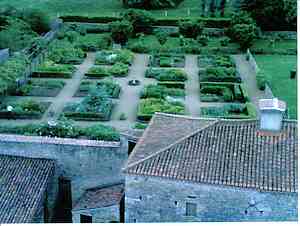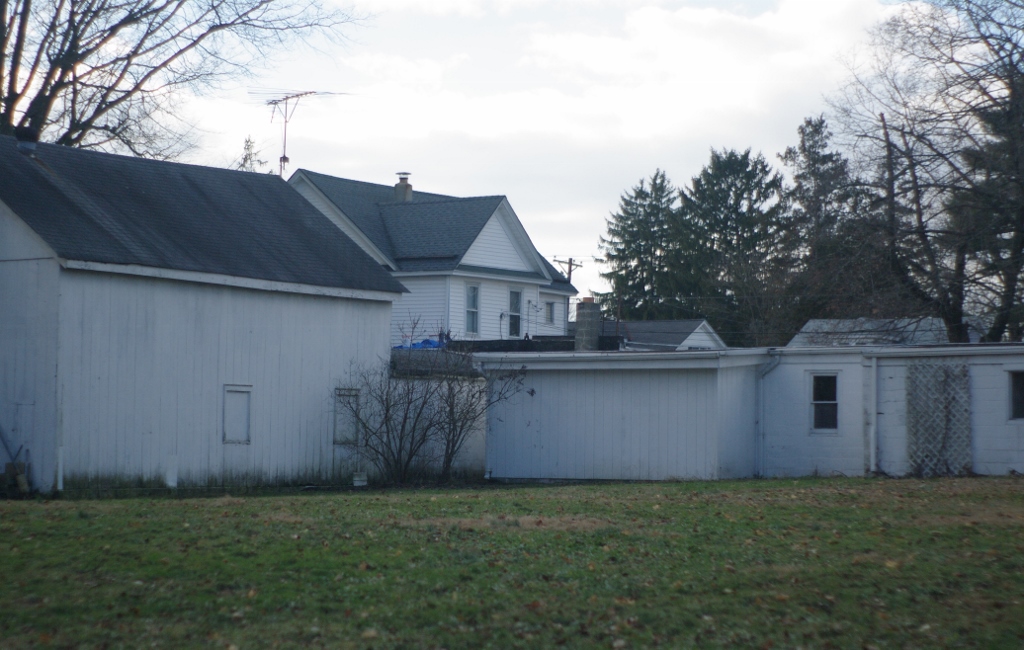I’m 44. The fact that I’ve just bought a house with a 30 year mortgage, which means I’m probably not going to be able to retire until I’m 74 has not escaped me. The fact that I took a good chunk out of my retirement funds to help buy said house may seem like a wacky thing, but it really was time to get out of Dodge with the old house, and I wanted a house I could retire in.
I loved this house for a couple reasons, aside from the lovely house itself: it has a structure I can eventually put a full fiber studio in, where I can teach and do fiber arts and hopefully sell my goods or lessons (making some income); and it has a huge back yard where I can put a garden in and produce products that I can hopefully sell (making some income). Do I expect to be able to live job-free on this? of course not. But a bit of extra income without having to leave my own land is a dream of mine.
There are fixes to the fiber studio structure that need to be done, and those can’t be started (or possibly paid for) until spring and tax return season. But January is the season of garden planning. Ordering seed/plant catalogs, coming up with plans, dreaming of the spring and upcoming warmth (especially after last week’s polar vortex). I’ve been looking at magazines and books, trolling Pinterest for ideas, and just all-around daydreaming for weeks.
Step One: What do I want out of my garden?
If you’re planning a garden (or any home improvement project, for that matter), you need to decide what the goal is. My goal is to produce useful plants, for varying purposes:
- Dyeing plants. I am a fiber artist, and want to do some natural dyeing and sell my dyed goods. What I do not use, I can sell to other fiber artists who dye with plant materials.
- Brewing plants. We brew beer and might start cidering. plants that can be used to do this are definitely on the list. Years ago we grew black raspberries to make a fantastic black raspberry stout. Looking forward to doing that again. What fruit we are not able to use ourselves with can sell to other local brewers. If we hone in on historic varieties, I think there’s a better market with the people we know.
- Bee Flowers. Since I’m hoping to start a top-bar hive that can benefit the garden with pollenation and me with some occasional honey and beeswax, bee flowers are a must. Aside from which, they’re pretty and generally smell wonderful.
- Herbs. Aside from the obvious kitchen herbs (thyme, rosemary, basil, mint, etc), there are other useful plants that can be gathered and used. Soapwort for example is a pretty, low-growing flowering plant, and the leaves can be used to make a watery soap-like brew I can add to shampoo.
- Useful bushes. Willow and Hazel are historically harvested yearly, they can be used to make basketry, fences, etc. Since I want to surround the garden with a wattle fence, I need to have a source of willow or hazel to make that fence. The least expensive and easiest way to do that is to grow my own willow and hazel, and harvest it to make the fence over a few years.
- Fruits & Veggies. While I don’t expect to make any income from growing fruits and veggies, it’s always nice to eat food grown in your own garden. Potatoes, strawberries, peppers, tomatoes, melons, cucumbers, etc.
Step 2: What Style?
There’s lots of garden styles, from very unstructured to very structured. While I love the charm of a cottage style garden, I wanted something more structured for planting/harvesting purposes. Farm-style garden with rows and furrows take a fair bit of effort, and I was looking into no-till gardening as an option to have something I can keep up with while working full time, doing my other hobbies, having a life, etc. Classical formal gardens just aren’t my style at all. Raised bed gardens are easy to work with, support no-till methods, and will be better to work in as I get older. I like practicality.
Given my historical geekiness, I was drawn to medieval monastic gardens. They are functional, pretty, and definitely suit my sensibilities. A viewing of Tudor Monastery Farm by the BBC definitely helped nudge me toward this style (I loved the wattle fencing).
Here are the plans for my garden
Here is the area where the garden will sit, in the corner between my studio (right) and the neighbor’s barn (left). The sun sets behind the studio, so lots of morning/afternoon sun while the side of the garden closest to the studio will get less of the afternoon scorching rays, for plants that don’t tolerate that well. For reference, the yellow circle on the plan points to the neighbor’s barn.
Next Step, determining what specific plants to purchase, what to purchase this year, and what we can feasibly afford in both time and money to do this year. This is a multi-year project to get this all set up, and I know it.



